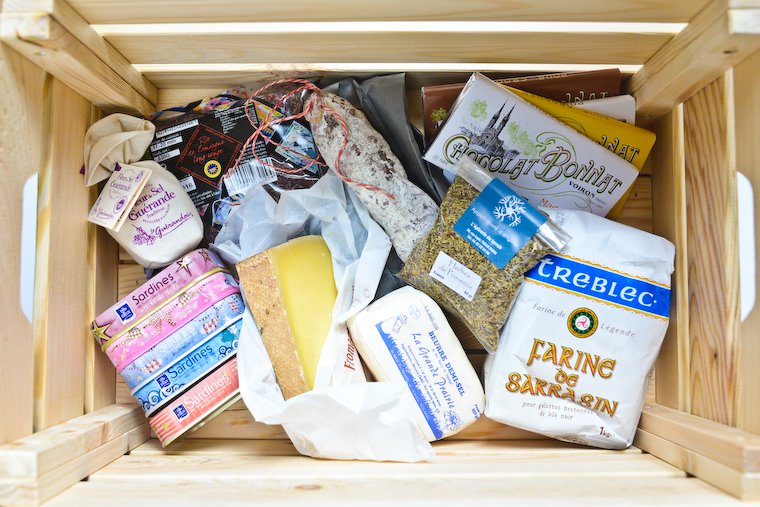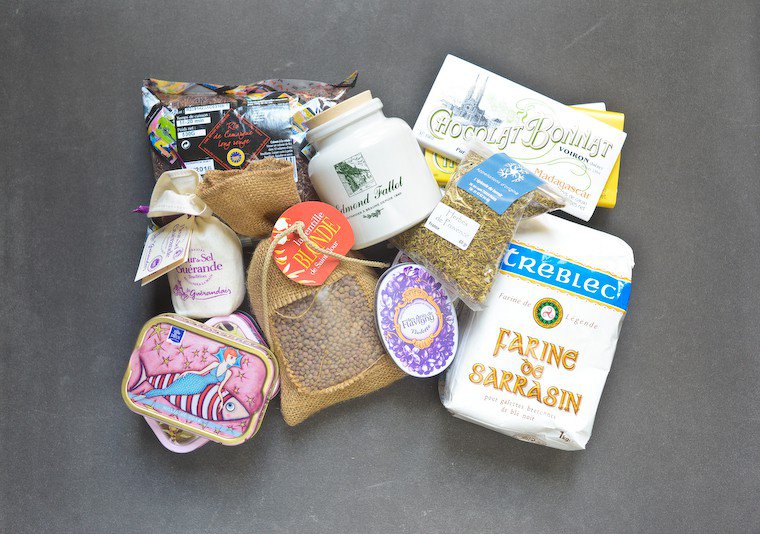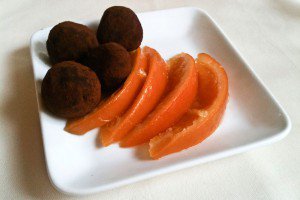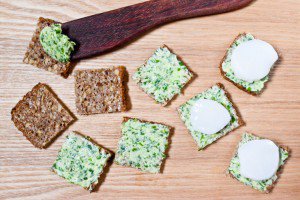Planning a trip to France, and not sure what to bring back as an edible souvenir for yourself, or a thank you gift for the kind soul who’s watching your dog/goldfish/child while you’re away?
I have twelve suggestions of artisanal products that are typically French, won’t break the bank — all items are under 10€ — and will actually get used and eaten in your or your friend’s kitchen when you get back.
Those are all easy to find, too. For each item I’ve recommended where to look!
Note: Different countries have different customs policies limiting what you can and can’t bring back in. Before you leave, be sure to check with your local customs office and print out their recommendations to avoid the heartbreak of having your treats confiscated. As an example, here’s information from the US Customs Department. And if you’re flying, anything liquid (even remotely so, such as mustard) must be placed in your checked luggage.
Buckwheat flour

Brittany is the land of crêpes, and the savory version is made with buckwheat flour, giving them an incredibly aromatic, nutty flavor. Look for locally grown farine de sarrasin and use it in your baking — it is gluten-free — and, of course, to make your own buckwheat galettes.
Where to find: organic stores, mainstream supermarkets.
Related: Where to Buy Organic Food in Paris.
Canned sardines
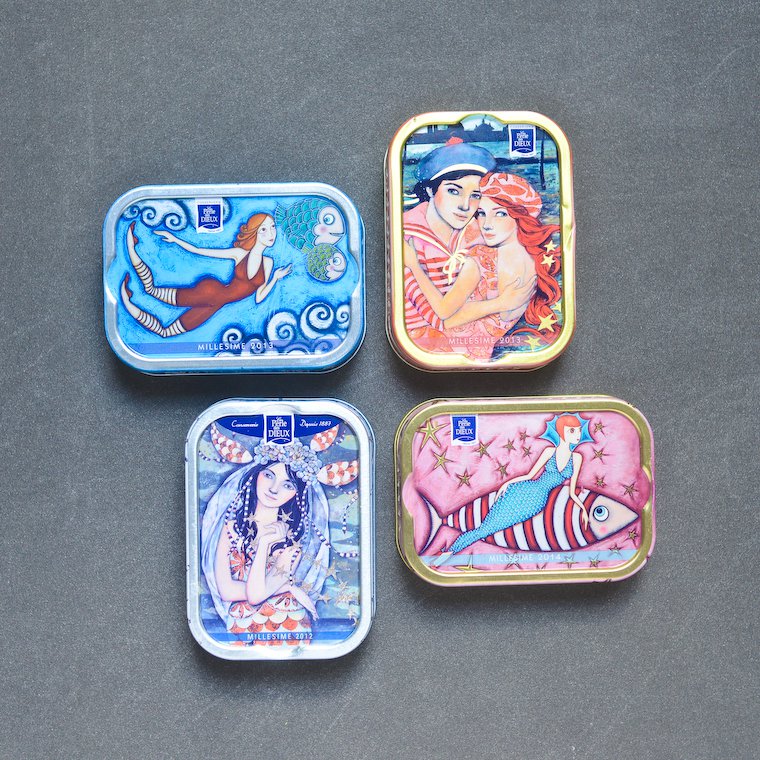
The French have a passion for canned sardines, mostly fished in the Atlantic, and they like to buy them in decorative tins that make them lovely collectors’ items. They are wonderful to keep on hand for an easy and enjoyable lunch, and to make a quick sardine rillette spread, or this dish of pasta.
Where to find: organic stores, fish shops, fine foods shops, mainstream supermarkets.
Fleur de sel

Sea salt is harvested in salt marshes, and the very top layer is the prized fleur de sel (“salt flower”), which comes in delicate and slightly crunchy crystals. It is best used as a finishing salt on fish, meat, vegetables, or in baking, such as in these lemon shortbread.
Where to find: organic stores, fine foods shops, mainstream supermarkets.
Rice from Camargue
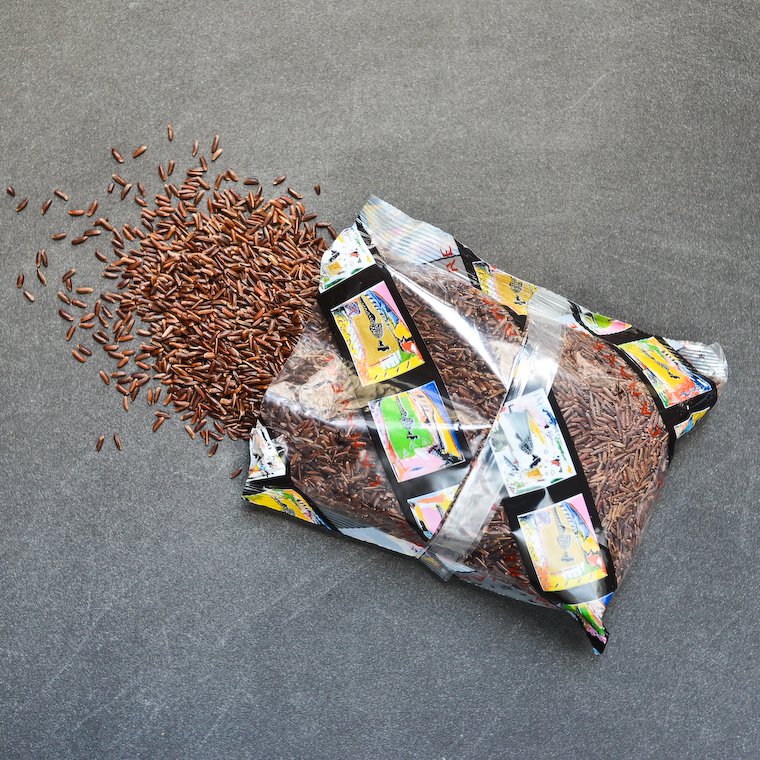
You might not think of France as a rice-growing country, yet the Camargue region is an exceptionally rich marshland where the grain thrives. Seek out red or black rice for a nice change of pace, and savor their full flavour, with nutty and woody notes, and subtly chewy texture. You’ll find a recipe for my delicious Red Rice, Green Bean, and Almond Salad on page 66 of The French Market Cookbook!
Where to find: organic stores, fine foods shops, mainstream supermarkets.
Herbes de Provence
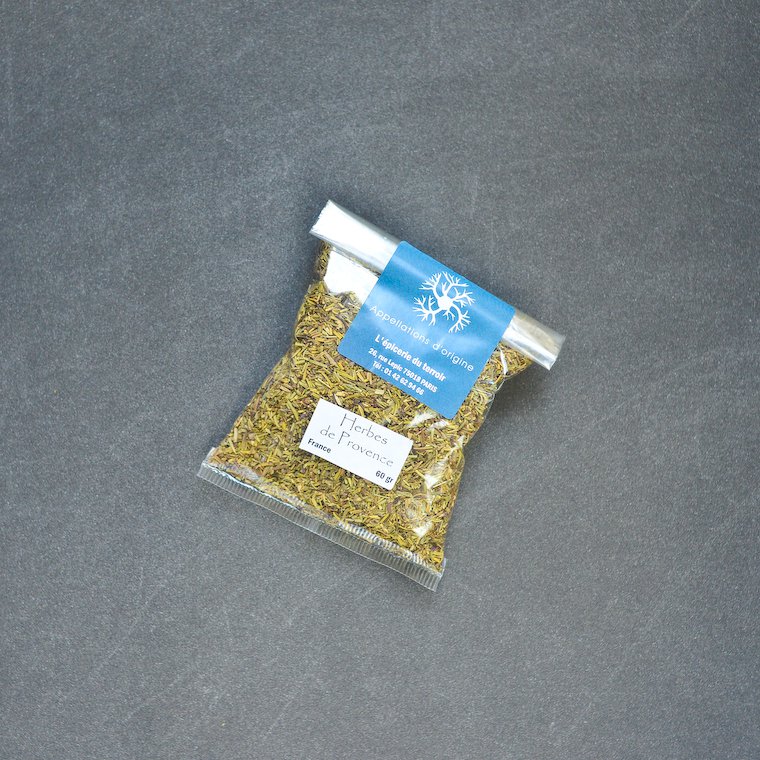
This traditional mix of dried herbs usually contains a base of thyme, basil, tarragon, oregano, and rosemary. It is very versatile: apply it on meats and fish as a dry rub or marinade, fold it into bread or cracker dough, and use it to flavour grains, legumes, and vegetables. Seek out “Label Rouge” mixes to guarantee French-grown, high-quality herbs.
Where to find: fine foods shops.
French lentils

Lentils are a traditional crop in France, and the varieties we typically grow are small, flavorful, and retain their shape when cooked, all traits that make them perfect for lentil salads of all stripes. Some of my favorites are the famous lentilles vertes du Puy (protected by an AOP) and the lesser-known but Slow Food-approved lentilles blondes de Saint-Flour.
Where to find: organic stores, fine foods shops, mainstream supermarkets.
Dijon mustard

The French kitchen would not be complete without a jar of strong mustard, to use as a condiment with virtually everything, or as the all-important ingredient in mayonnaise and vinaigrette. Since most French mustard manufacturers nowadays work with mustard seeds grown overseas (hello, Canadian friends!), I favor the Edmond Fallot brand. This family-owned, Burgundy-based mustard company makes stone-ground mustard and is promoting and supporting the local production of mustard seeds.
Where to find: organic stores, fine foods shops (for the Edmond Fallot line). (Mainstream supermarkets will carry industrially made mustard.)
Bean-to-bar chocolate

Bean-to-bar chocolatiers control the entire process from the cacao bean to the bar you actually eat, and the resulting chocolate typically has lots of personality. My favorites are Le Chocolat Alain Ducasse, Stéphane Bonnat, Rrraw, and Pralus.
Where to find: chocolate shops, fine foods shops.
Related: French Chocolate Shop Do’s & Don’ts
Aniseed drops

Among the most cherished of regional French treats is the aniseed drop from Flavigny-sur-Ozerain, which has been manufactured in this medieval Burgundy village (where the 2000 film Chocolat was shot!) since the sixteenth century. The simplicity and freshness of this candy — spiked with natural flavourings such as lavender, clementine, ginger, or black currant — make it easy to love, as do the quaint, pretty pillboxes adorned with romantic illustrations of a shepherd and his sweetheart, which young French children covet to put away their treasures.
Where to find: mainstream supermarkets in Burgundy, organic stores, fine foods shops.
Aged comté cheese
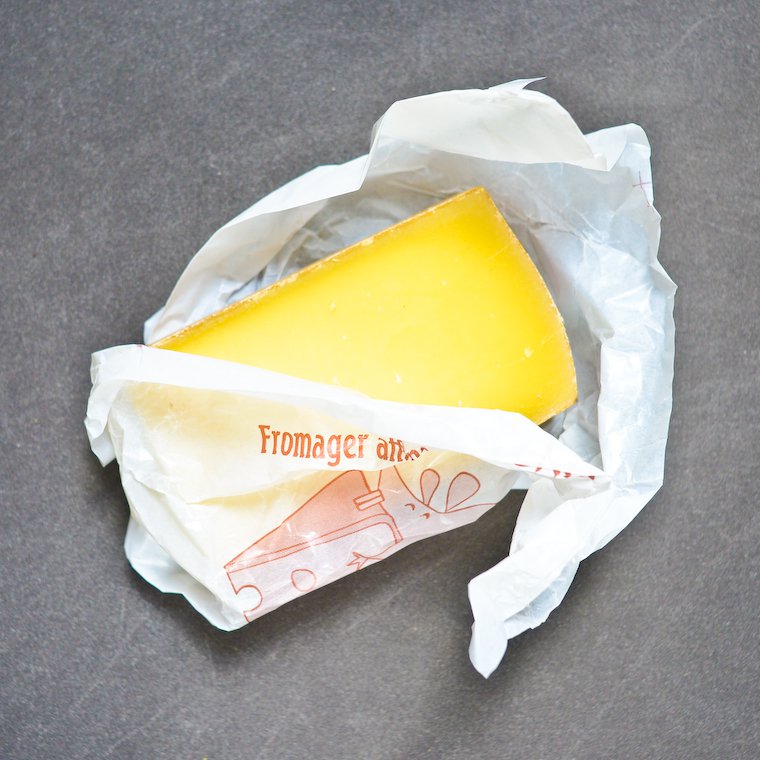
Comté, a mountain cheese from the Jura, is France’s favorite, probably because it’s both a great cooking cheese and an excellent snacking cheese. Cheese shops worth their salt offer it at different stages of ripeness, and aged comté — 24 to 36 months old — is a must-taste, developing aromas of truffle and crunchy salt crystals. (Learn more about comté here.) For best traveling conditions, ask the cheese vendor if they can vacuum-pack it for you.
Where to find: cheese shops, organic stores.
Related: Buying Cheese Like The French.
Saucisson (dried sausage)
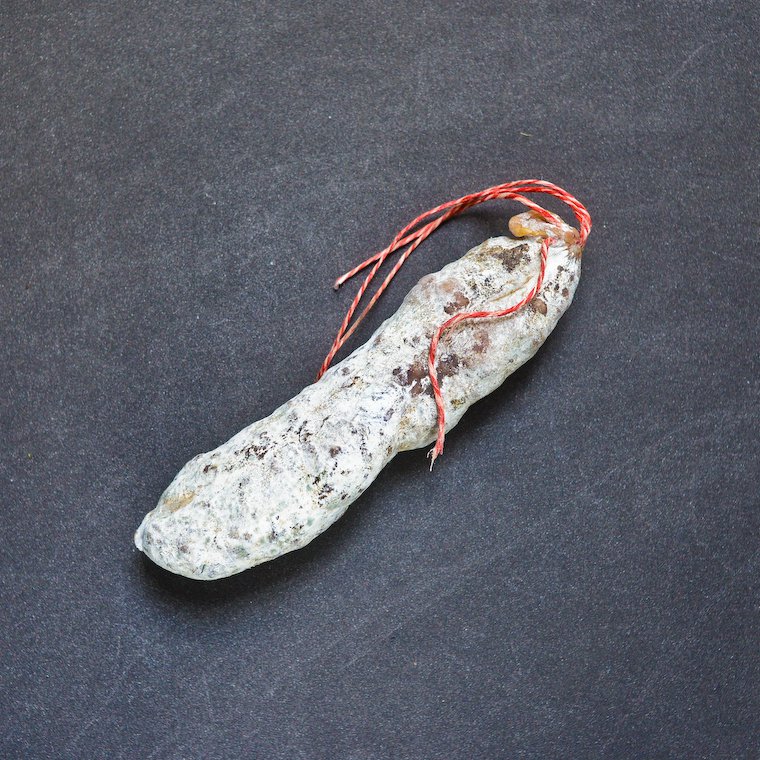
There are pork farmers in every region of France, and one of the most popular charcuterie item you can buy from them is the saucisson, a thick dried sausage that may be flavored in various ways. No apéritif spread can be called French without one; serve in slices with cornichons (pickles) and crusty bread. Unopened saucisson will travel fine at moderate room temperature. (Important note: Meat products are among the most closely watched by customs policies, so triple-check your home country’s regulations before traveling.)
Where to find: charcuteries, butcher shops, organic stores, fine foods shops (*not* mainstream supermarkets).
Related: Buying Meat Like The French.
Artisanal butter
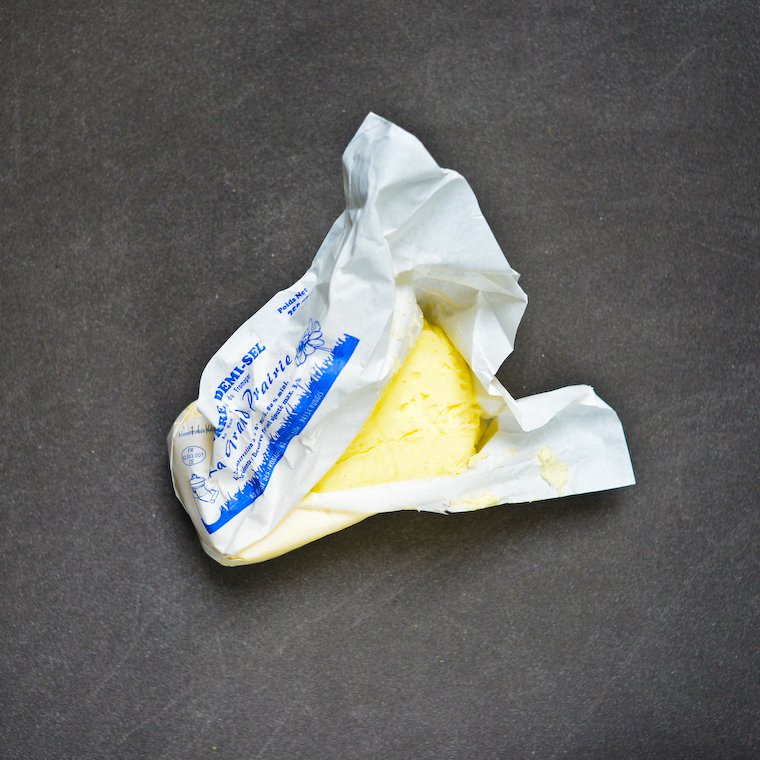
The taste of artisanal French butter, sweet and rich and nutty, is one you don’t soon forget. Admittedly this isn’t the easiest item to travel with, but butter is such a cornerstone of French cuisine and pâtisserie that I had to include it for those of you who might not be traveling very far, or will be traveling with an insulated bag and an ice pack. Seek out beurre de baratte to favor artisanal production; my favorite kind is the demi-sel (lightly salted).
Where to find: cheese shops, organic stores.
Join the conversation!
Have you ever brought back food gifts from France? What did you pick out, and whom did you give them to? What will you make sure you purchase on your next trip?
